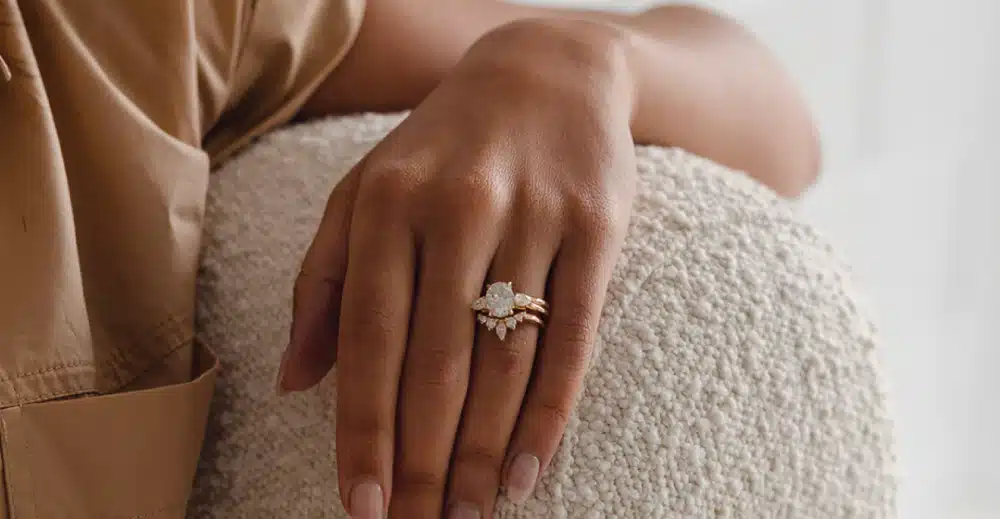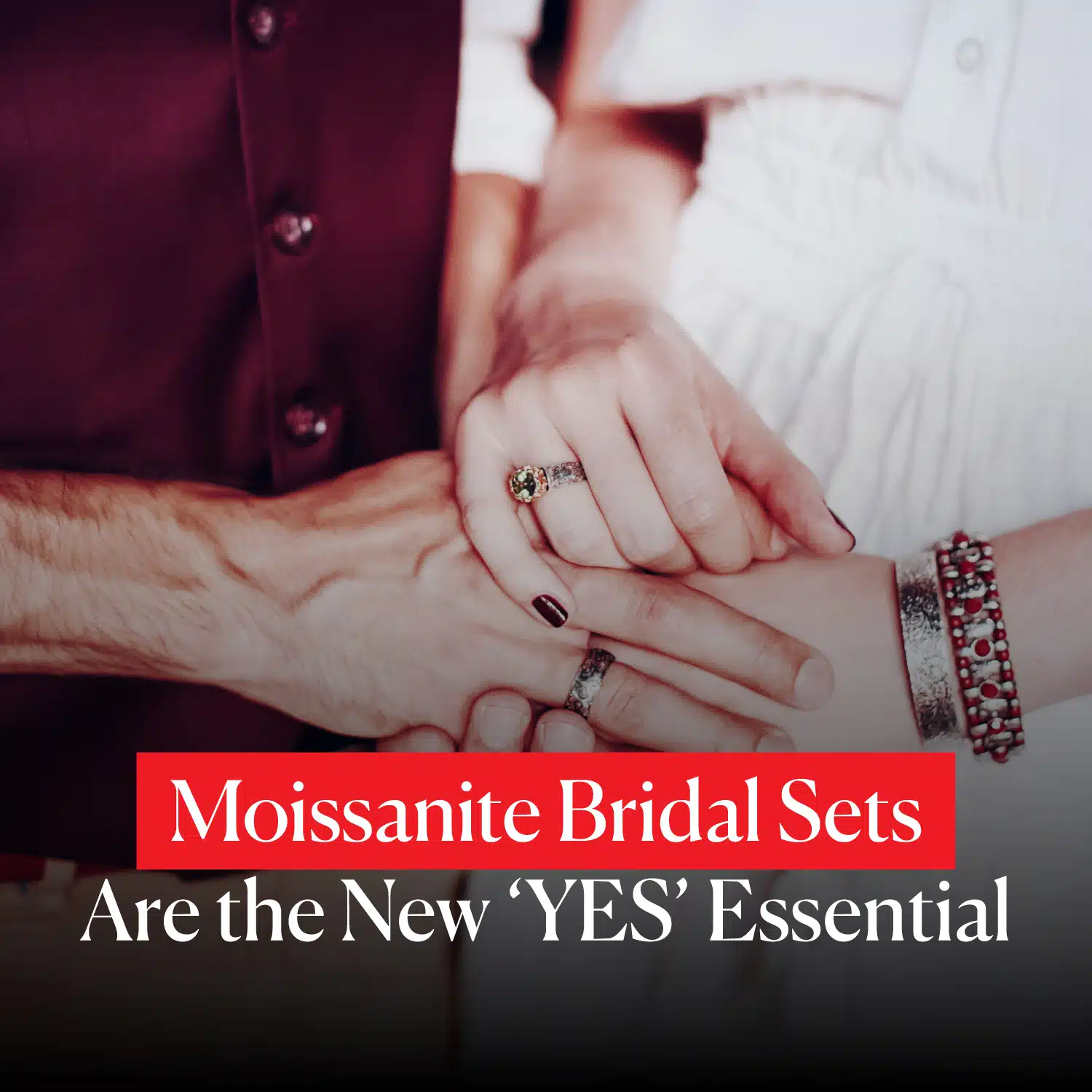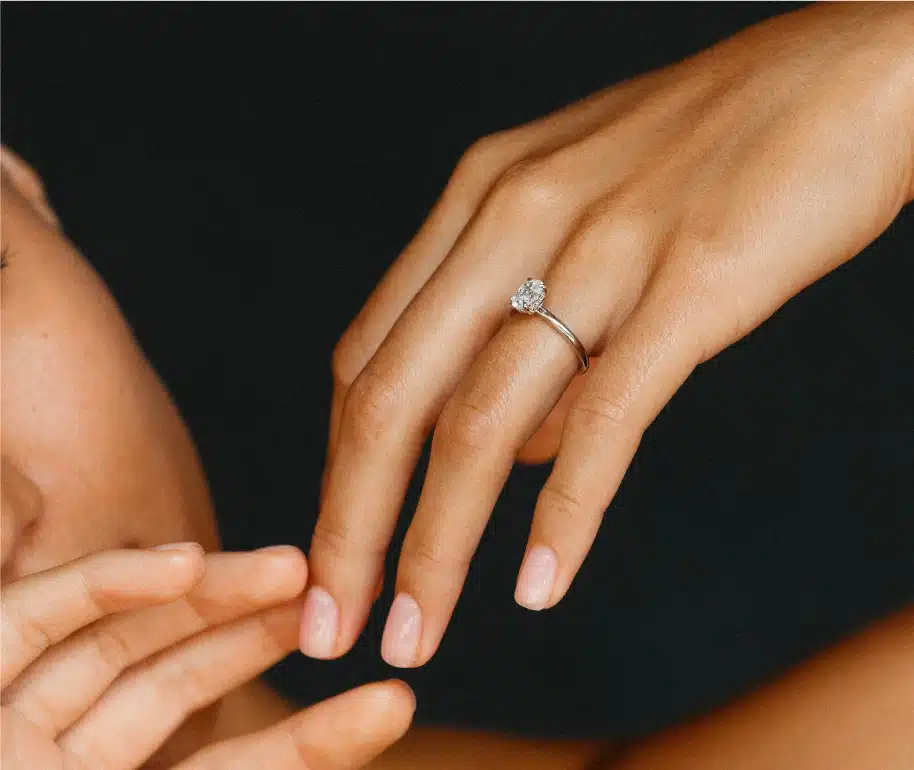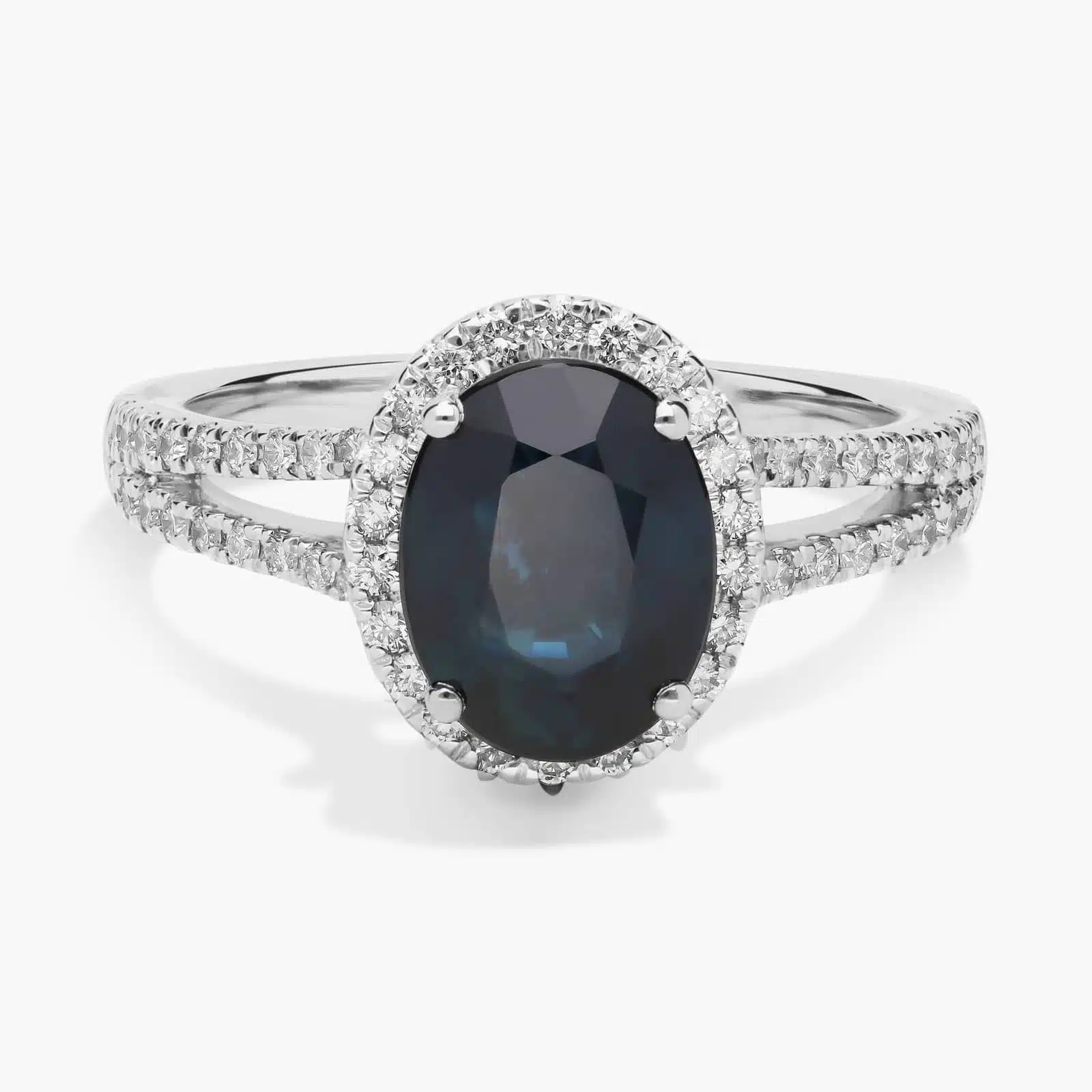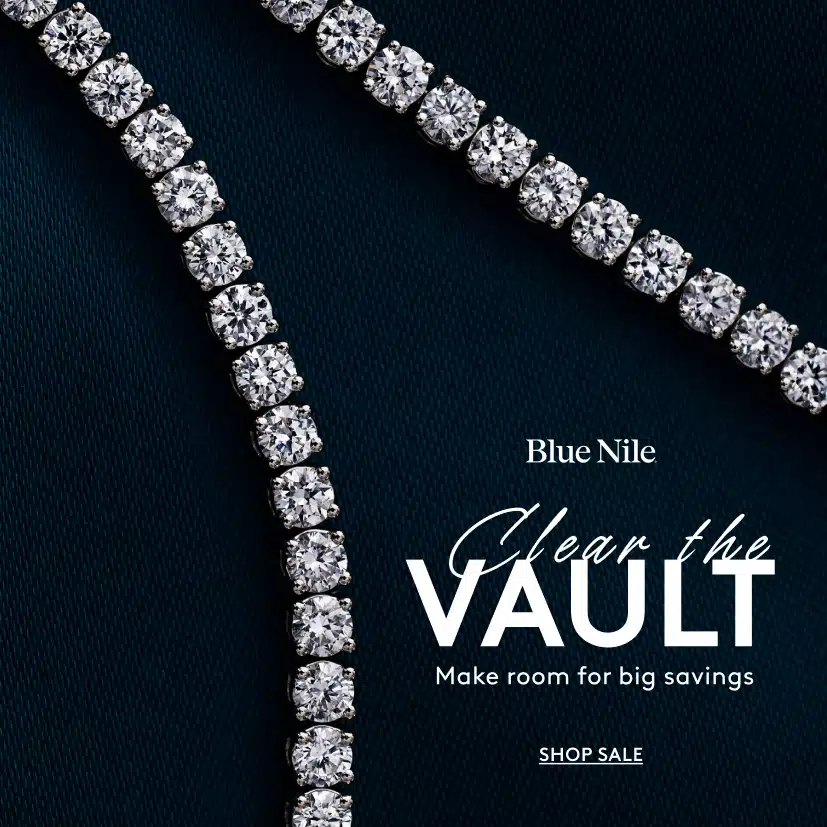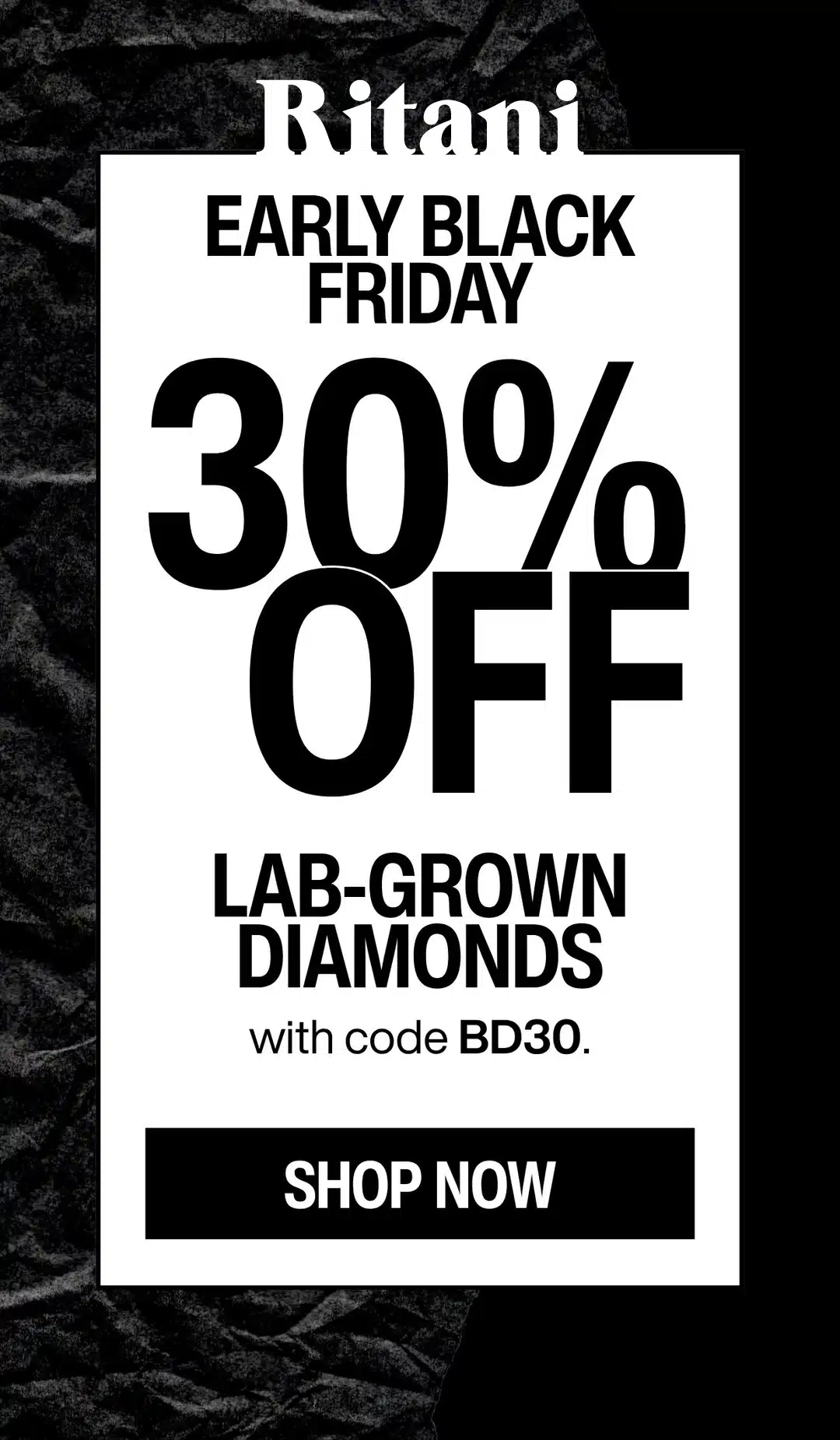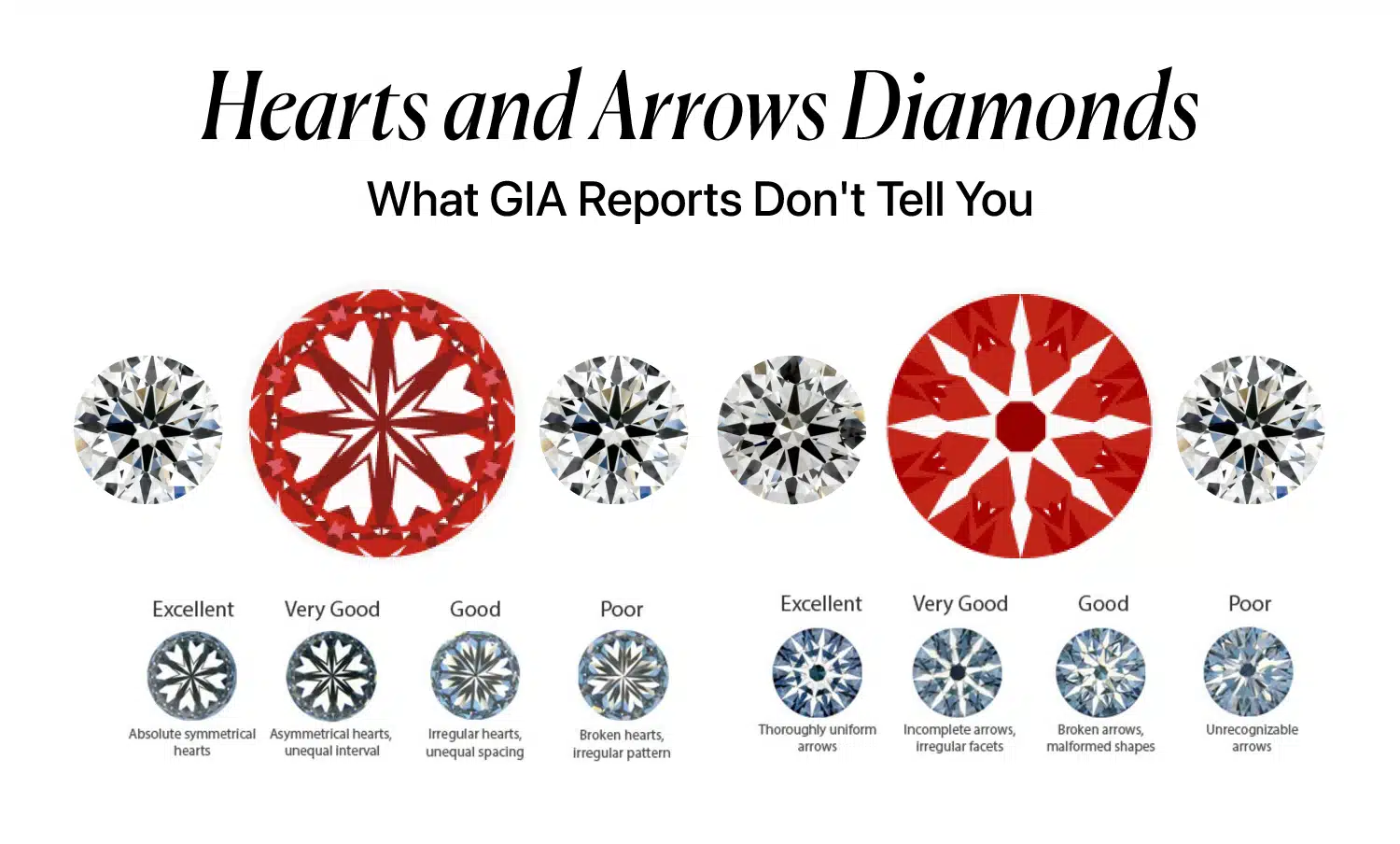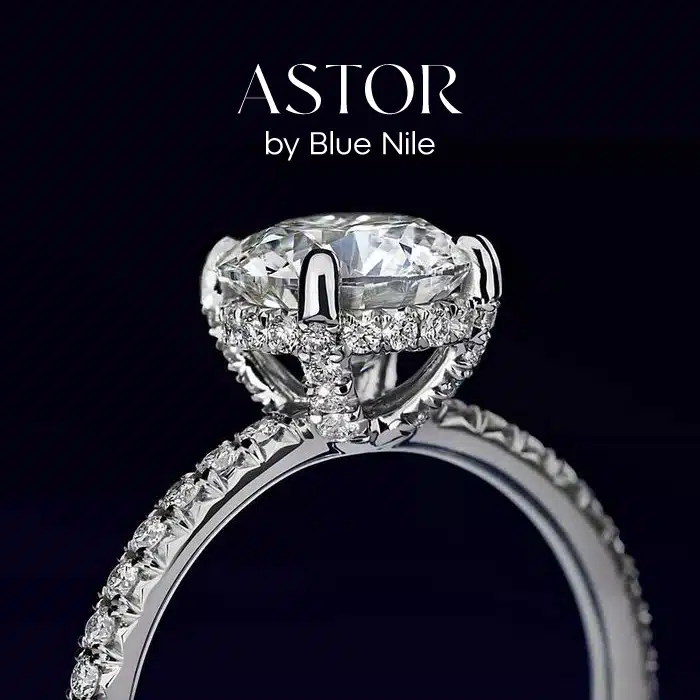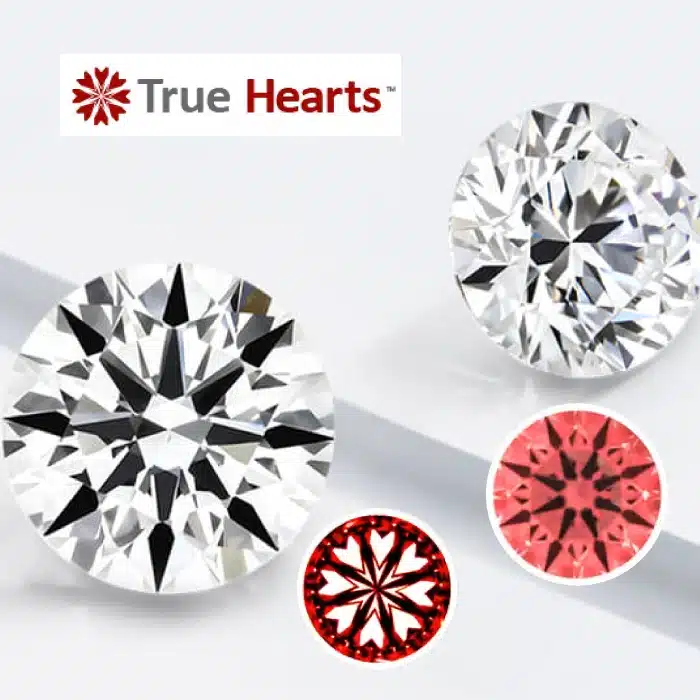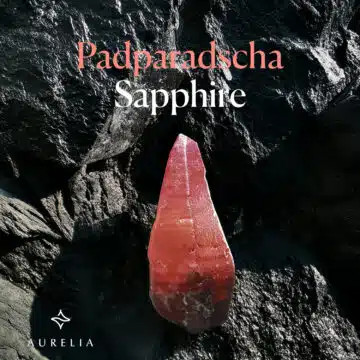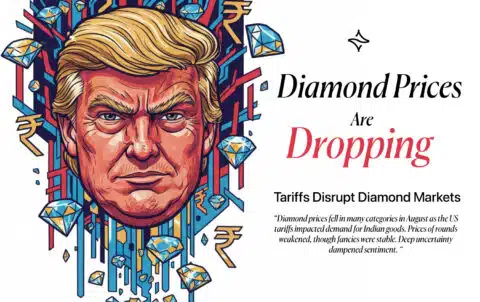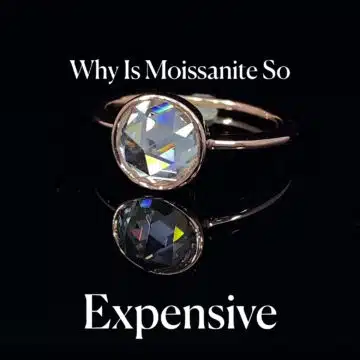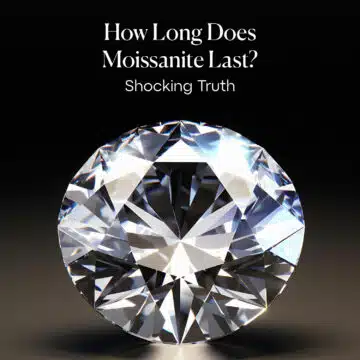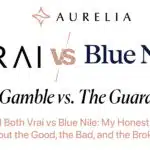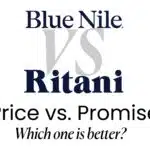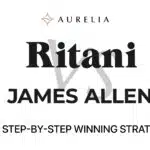No, a standard GIA report for a diamond does not mention or grade for Hearts and Arrows; instead, H&A is a precise visual pattern of eight symmetrical “arrows” from the top and eight “hearts” from the bottom that only appears in a round brilliant diamond cut with the most perfect symmetry, acting as the key sign of a “super-ideal” cut that a certificate alone can’t show you.
You’ve probably seen the term ‘Hearts and Arrows’ next to a higher price tag and wondered, ‘Is this real, or just a clever marketing gimmick?’ Your GIA certificate says ‘Excellent,’ but since it doesn’t mention Hearts and Arrows, does that mean H&A is something even better? It’s a confusing term, and jewelers often aren’t great at explaining what it really signifies.
As your friend in the business, I’m going to pull back the curtain on this elite corner of the diamond world.
I will explain exactly what Hearts and Arrows are, why this pattern is a powerful sign of craftsmanship that a GIA report can’t tell you, and most importantly, I will teach you how to see it for yourself. We will look at real-world examples and by the end, you’ll know exactly what to look for.
- H&A Isn't the Goal, It's the Beautiful Side-Effect
- If My Diamond is "GIA Excellent," Isn't That Enough?
- A Visual Guide: Spotting the Arrows (The Pro's Litmus Test)
- The Branded "Super-Ideals" vs. Finding Your Own
- Mehedi's Actionable Checklist
- Your Hearts and Arrows Diamond Questions, Answered
- The Verdict: An Effect, Not Just a Feature
Diamond IQ Test: Natural or Lab-Grown?
Two identical diamonds: GIA Certified, 1.51ct, D Color, VVS1, Ideal Cut. One is natural ($16,530), the other is lab-grown ($2,390). Choose the diamond you like better and see if you can match it to its origin.
H&A Isn’t the Goal, It’s the Beautiful Side-Effect
Before we go any further, we need to correct the single biggest misconception about Hearts and Arrows diamonds. Many people think the pattern is a “feature” that is carved into a diamond to make it more special, like an engraving.
The truth is the exact opposite. A master diamond cutter’s goal is not to create the Hearts and Arrows pattern. Their goal is to create the most brilliant, most fiery, and most scintillating diamond humanly possible.
The Hearts and Arrows pattern is the beautiful, symmetrical side-effect that only appears when they achieve that goal with near-perfect precision.
The Cause: An Obsession with Perfect Light Performance
Let’s start with the cause. When a master cutter sits down with a high-quality rough diamond, they are embarking on a high-stakes geometry problem.
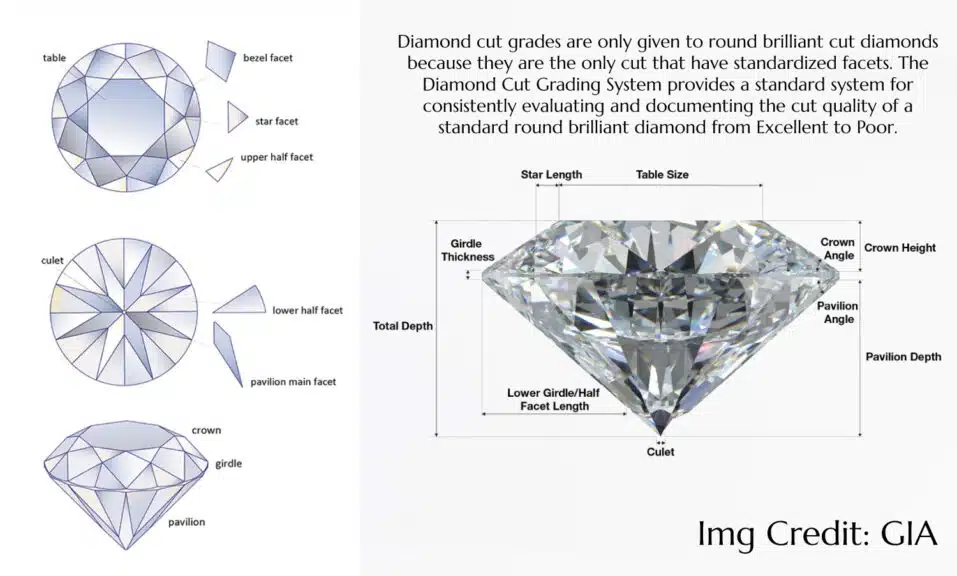
They know that a round brilliant diamond has 58 facets, but their mission isn’t just to polish those 58 facets onto the stone; it is to align them in perfect three-dimensional symmetry.
Think of the diamond as a tiny, celestial sphere covered in mirrors. The cutter must control:
- The exact angle of the crown (the top).
- The exact angle of the pavilion (the bottom).
- The exact size of the table (the main top facet).
- The precise length and alignment of every single one of the 58 facets in relation to each other.
They are working with tolerances measured in fractions of a degree. This fanatical pursuit of perfection is all in service of one thing: optimal light performance. The goal is to create a diamond that acts as a perfect light prism.
Any light that enters the top is captured, bounced around internally between those perfectly aligned pavilion facets with minimal “leakage,” and then returned to the viewer’s eye as an explosion of white light (brilliance) and rainbow colors (fire).
The Effect: The Symmetrical Pattern is Revealed
Now for the effect. When, and only when, a cutter achieves this near-perfect optical symmetry, something magical and unintended happens.
The Arrows: When you look down through the top of a perfectly cut diamond, you are seeing a precise reflection of the eight pavilion main facets.
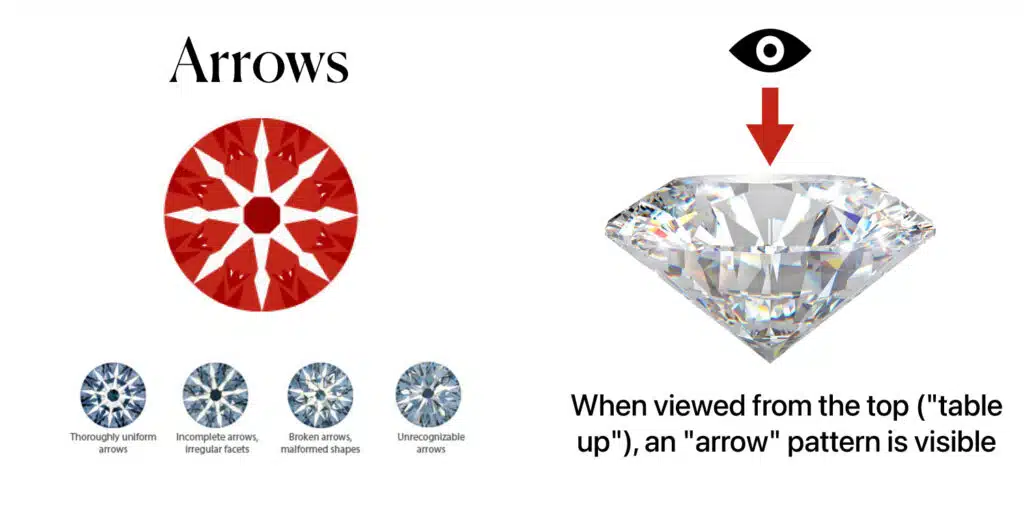
When all eight of those facets are perfectly shaped, perfectly sized, and perfectly aligned, their reflection forms a pattern of eight flawless, uniform arrowheads pointing out from the center.
The Hearts: When you flip the diamond over and look through the pointed bottom (the pavilion), you see a reflection of the crown facets.
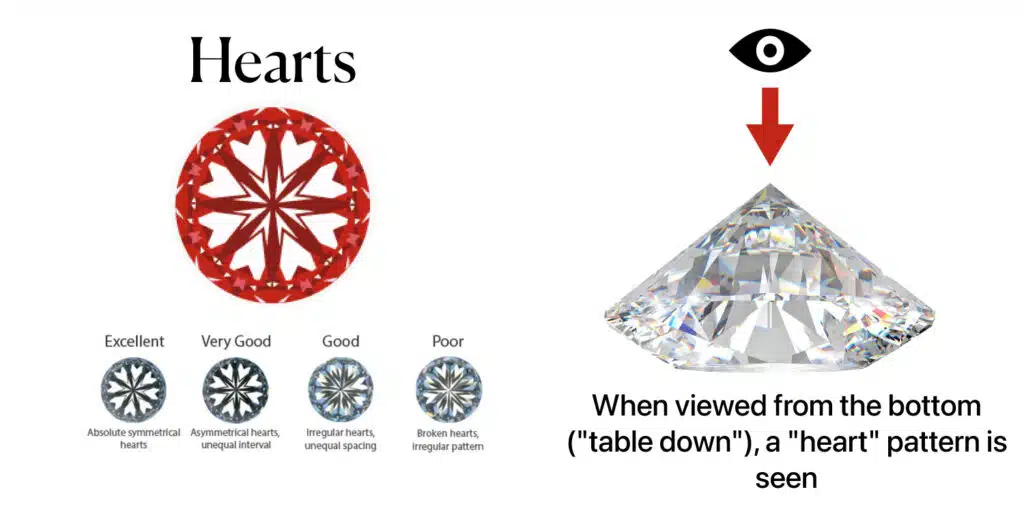
When the eight crown bezel facets and sixteen upper-girdle facets are in perfect harmony, their reflection creates a stunning pattern of eight uniform hearts between the arrowheads’ shafts.
This pattern was first “discovered,” not invented, in the 1980s in Japan with the development of a special scope called the Firescope, which was designed to analyze a diamond’s light return. They noticed that the most brilliant diamonds all exhibited this unintentional, beautiful pattern. The pattern became a visual confirmation of an exceptional cut.
My Mehedi Explanation
Here’s the simplest and most important way to think about this: The Hearts and Arrows pattern does not cause the diamond to be brilliant. The perfectly brilliant cut causes the Hearts and Arrows pattern to appear.
It’s like a perfectly tuned, high-performance car engine. The engineers’ goal is to make the engine powerful and efficient. A beautiful, clean, and powerful exhaust note is the effect of that perfect tuning. You can’t just weld on a loud muffler and expect the car to go faster. The performance has to come first.
It’s the exact same with diamonds. A cutter can’t just “paint” a hearts and arrows pattern onto a mediocre stone to make it seem better.
The pattern is the ultimate visual proof—a badge of honor, really—that the cutter achieved a level of three-dimensional precision that goes above and beyond what a standard GIA “Excellent” grade can tell you. It is your secret sign of a truly “super-ideal” cut.
If My Diamond is “GIA Excellent,” Isn’t That Enough?
This is the most intelligent and important question a savvy buyer can ask. You’ve done your homework, and you know that a GIA “Excellent” cut grade is the top of the line. For many people, that is absolutely enough to guarantee a beautiful, brilliant diamond.

But as your friend in the business, I want to let you in on a professional secret: “Excellent” is a category, not a single point of perfection.
The “Excellent” Spectrum
Think of it like being an “A” student in a difficult class. A student who gets a 91% is an “A” student. A student who gets a 99% is also an “A” student. Both are fantastic, but you and I both know that one of them is on a completely different level of mastery. It’s the exact same with diamonds.
GIA’s parameters for their “Excellent” cut grade are designed to include a range of very well-cut diamonds. This allows diamond cutters a small amount of flexibility to maximize the carat weight they can get from a piece of rough diamond.
The result is a spectrum. You can have a “low Excellent” that is beautiful and brilliant, and then you can have a “high Excellent”—a true “super-ideal” cut—that is absolutely breathtaking. A Hearts and Arrows pattern is the visual evidence that a diamond is at the very top of that “A” grade.
Best Deal Of The Year – Final Days
Blue Nile’s “Clear The Vault” is ON.
Shop Fine Jewelry Upto 70% OFF.
*Exclusions may apply. See Blue Nile for complete details.
The Missing Piece of Data
So why doesn’t the GIA report just tell you if it’s a 91% or a 99%? Because the standard GIA report, for all its incredible detail, does not grade for optical symmetry.
Let me explain. The “Symmetry” grade on your GIA report refers to the two-dimensional neatness and alignment of the facets. It’s a measure of how well the “drawing” of the diamond matches up.
Optical symmetry, however, is a much more complex, three-dimensional concept. It refers to how perfectly every single one of the 58 facets are aligned in relation to each other, not just on the surface, but in terms of their angles and depth, to create a perfect system of mirrors.
It is this fanatical, three-dimensional precision that creates the Hearts and Arrows effect. And it is this specific data point that the standard GIA report does not provide.
The Visual Litmus Test
This is where your own eyes become your most powerful tool. Since you can’t rely solely on the certificate to find a super-ideal stone, you have to learn what to look for.
The “hearts” pattern is very difficult to see without a special viewer, but the “arrows” pattern is often clearly visible in the high-quality 360-degree videos provided by top online jewelers. Learning to spot it is the ultimate litmus test for a superior cut.
Let me show you exactly what to look for.
A Visual Guide: Spotting the Arrows (The Pro’s Litmus Test)
We are going to look at three different GIA Excellent-graded diamonds. I will show you how to analyze the arrows pattern to understand the subtle but crucial differences in their cut quality.
The “Good”: A True Hearts & Arrows Diamond
First, let’s look at the pinnacle. This is a branded, super-ideal stone that is guaranteed to be the best of the best.
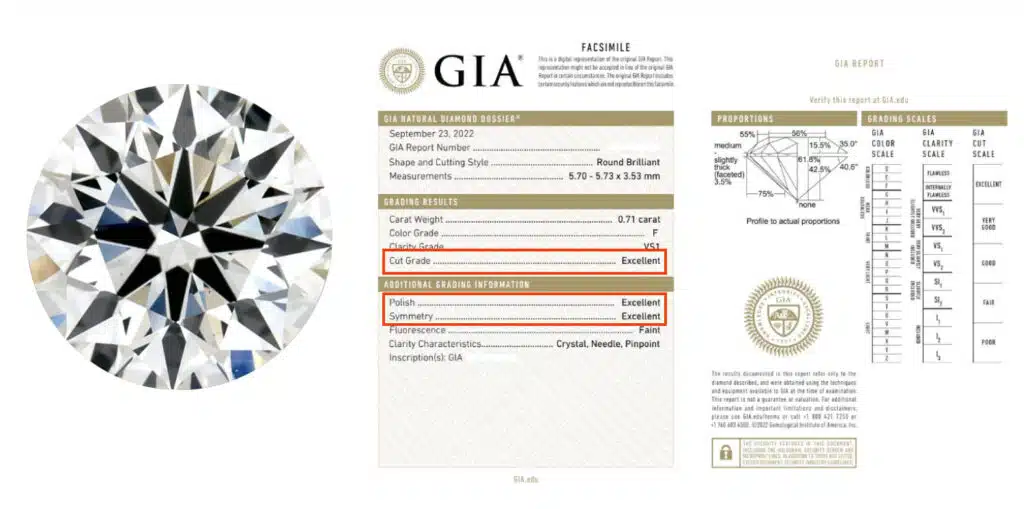
What you’re seeing: Look into the table of this diamond. Notice the pattern of eight perfectly formed, high-contrast, symmetrical arrows pointing out from the center.
Each arrow is crisp and distinct. The shafts are straight, the tips are pointed, and they are all identical in size and shape. This is a textbook Hearts and Arrows pattern. This is a visual sign of perfect optical symmetry and a true “super-ideal” cut.
The “Good Enough”: A High-Quality GIA Excellent Diamond
Next, let’s look at a fantastic, non-branded diamond. This is a beautiful and very brilliant diamond that represents excellent value.
- Our Example: The 0.78 Carat, I Color, VS2, GIA Excellent Cut Diamond on James Allen.
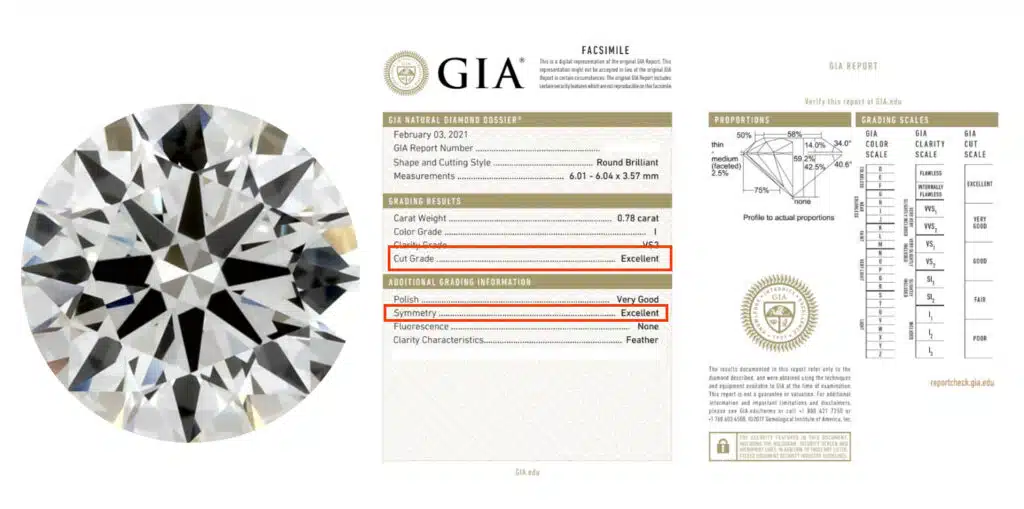
What you’re seeing: This is a beautiful GIA Excellent diamond. You can still clearly see an arrows pattern, which is a fantastic sign. However, if you look very closely, the arrows might not be perfectly uniform or as crisp as the Astor cut.
Some tips may be slightly less defined, or the shafts may have minor variations. Make no mistake, this is a fantastic stone that will be incredibly brilliant on the finger.
It is a high-quality GIA Excellent, but it just falls short of that “super-ideal” H&A perfection. This is a very smart buy for the value-conscious shopper.
The “Could Be Better”: A Standard GIA Excellent Diamond
Finally, I want to show you another diamond that also has a GIA Excellent cut grade. This is where learning to use your eyes becomes so important.
- Our Example: The 0.80 Carat, J Color, VS1, GIA Excellent Cut Diamond on James Allen.
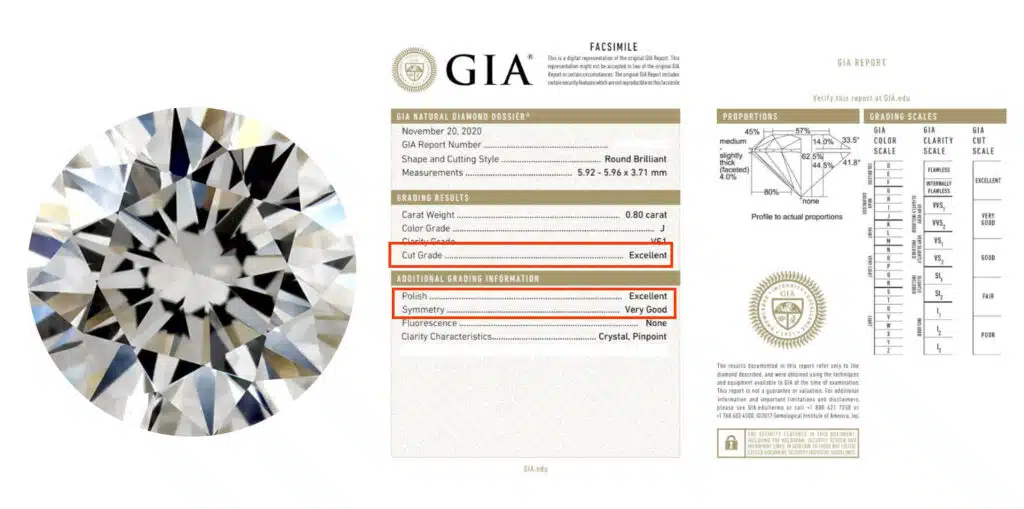
What you’re seeing: Look at the arrows pattern here. Notice how it’s much less defined than the other two examples? Some of the tips are misshapen, the shafts can appear slightly bent or wavy, and the pattern as a whole lacks that perfect, crisp symmetry.
This is a visual sign that while the diamond’s overall proportions fall within GIA’s “Excellent” range, its optical symmetry is at the lower end of that spectrum. It will still be a beautiful diamond, but it will not have the same level of fire and scintillation as the other two.
This is the critical difference that your eyes can see but the certificate won’t tell you. By learning to spot the quality of the arrows, you are empowering yourself to choose a diamond from the very top of the “Excellent” category.
The Branded “Super-Ideals” vs. Finding Your Own
Now that you can see the difference between a standard “Excellent” and a true “super-ideal” cut with your own eyes, we arrive at the million-dollar question: Should you pay the premium for a branded Hearts and Arrows diamond, or should you hunt for a non-branded one yourself?
As your friend in the business, I’m here to tell you that there is no single “right” answer. This is a choice between a guarantee of perfection and a hunt for value.
Both are valid paths, and the one that’s right for you depends entirely on your personality as a buyer, your budget, and how you value your own time and effort.
Let’s break down the two options.
The Branded Guarantee: The “Stress-Free” Path to Perfection
This is the path of certainty. The top online retailers have done the hard work for you by creating their own curated collections of “super-ideal” cut diamonds.
These are stones that have not only achieved GIA’s Triple Excellent grade, but have also been hand-selected and verified by their own in-house gemologists to exhibit a perfect, textbook Hearts and Arrows pattern.
- James Allen’s flagship collection is called True Hearts™.
- Blue Nile’s premier brand is the Astor by Blue Nile™.
Astor by Blue Nile is the collection for the data-driven buyer who demands scientific proof of performance. These diamonds are selected from the top 0.1% of Blue Nile's massive inventory, representing the most elite stones they offer. The collection's foundation is a unique dual-certification system that removes all guesswork, providing objective, third-party validation of a diamond's sparkle.
WHAT WE LOVE ABOUT THIS COLLECTION:
- Exclusive Dual Certification: Every diamond includes a GIA report plus a GemEx Light Performance report.
- Scientific Brilliance Scores: The GemEx report provides objective, numerical scores for Brilliance, Fire, and Sparkle.
- Ultimate Curation: Represents the absolute pinnacle of Blue Nile's inventory—only one in a thousand diamonds makes the cut.
- Guaranteed Performance: The strict vetting process guarantees an elite level of light performance, backed by data.
- The "Peace of Mind" Purchase: Perfect for buyers who want the proven best without needing to become a gemology expert themselves.
- Backed by Blue Nile's Upgrade Program: Your Astor diamond's full value can be applied toward a future upgrade.
True Hearts is James Allen's collection for the visual perfectionist. These diamonds represent the top 1% of all diamonds graded for cut quality, specifically screened for flawless optical symmetry—what the industry calls "Hearts and Arrows." From my professional standpoint, this is as close to a perfectly cut diamond as you can get, and James Allen gives you the tools to see it for yourself.
WHAT WE LOVE ABOUT THIS COLLECTION:
- Verifiable Hearts & Arrows Pattern: The ultimate visual proof of a masterfully cut round diamond.
- Advanced Imaging Included: ASET and Idealscope images are provided to let you analyze the light performance like a pro.
- AGS "Ideal" Certification: Many True Hearts diamonds carry the coveted AGS Ideal grade—the industry's most stringent for cut.
- Unmatched Visual Scrutiny: Combines the Hearts & Arrows precision with James Allen's best-in-class 360° HD videos.
- Empowers the Buyer: You don't just have to trust a report; you get the visual evidence to confirm the diamond's superior brilliance.
- Guaranteed Eye-Clean Perfection: These stones are hand-selected to be free of any distracting inclusions to the naked eye.
When you buy a diamond from one of these collections, you are essentially paying a premium—typically in the range of 15% to 25% more than a standard GIA Triple Excellent diamond—for a guarantee.
You are guaranteed to receive a diamond that is in the absolute top tier of the “Excellent” category. You are guaranteed perfect optical symmetry. You are guaranteed a flawless, crisp Hearts and Arrows pattern.
This is the “stress-free” path to perfection. If you are a buyer who wants the absolute best of the best, and you value the peace of mind of knowing that your diamond has already passed the strictest possible inspections, then a branded cut is an absolutely fantastic and worthwhile investment.
This is a deep and fascinating part of the market, and we’ve created several in-depth guides to help you explore it further:
- For those who value this level of guaranteed precision, our in-depth James Allen True Hearts Review is a must-read.
- To see how Blue Nile’s flagship brand performs, check out our full Astor by Blue Nile Cut review.
- For the ultimate head-to-head showdown, our Astor vs. True Hearts comparison breaks down the key differences between the two top brands.
The Value Hunter’s Path: Finding a “Virtual” Hearts and Arrows
This is the path for the savvy, patient, and detail-oriented buyer. It is absolutely possible to find a non-branded GIA Triple Excellent diamond that displays a beautiful, crisp, and near-perfect Hearts and Arrows pattern for a significantly lower price than a branded stone.
However, this requires you to do the work that the brands have already done. This is where you put your new skills to the test.
- The Process: You start by filtering for GIA Triple Excellent diamonds on a site like James Allen. Then, you must meticulously go through the 360-degree videos of your top contenders, looking for that perfectly formed arrows pattern we discussed in Section 2.
You will need to look at many, many diamonds. You’ll reject some that look dead, others that have a wonky arrows pattern, until you find that one “needle in a haystack” that has the visuals of a super-ideal cut at a non-branded price. - The Reward: The reward for this effort can be substantial. You can get 99% of the beauty and light performance of a branded Hearts and Arrows diamond for a price that is 15-25% lower. You are trading your time and expertise for a significant cash saving.
My Honest Advice: If you are a buyer who enjoys the thrill of the hunt, loves a great deal, and now feels confident in your ability to spot a great arrows pattern, then the “Value Hunter’s Path” is an incredibly rewarding and financially savvy choice.
But if you are a buyer who feels even the slightest bit of uncertainty, the peace of mind and guaranteed perfection of a branded True Hearts or Astor by Blue Nile diamond is worth every single penny of the premium.
Mehedi’s Actionable Checklist
Alright, we’ve gone deep into the theory and the strategy. Now, I want to boil it all down to a simple, four-step checklist. If you’re serious about finding a true Hearts and Arrows diamond, print this out, save it, and use it as your guide. This is my personal checklist for verifying a super-ideal cut.
1. Count the Arrows
This is your first, most basic test. When you’re looking at the 360-degree video of a diamond, look at it from the direct, top-down view. You must be able to clearly see exactly eight uniform and symmetrical arrows. Not seven, not nine. The pattern should be complete.
Each arrow should be identical in size and shape to its brothers. This is the first sign of the diamond’s incredible precision.
Read Our 5-Star Blue Nile Review
Check our comprehensive Blue Nile review to learn why we rated Blue Nile 5 stars for their exceptional quality and value.
2. Check for Perfect Alignment
Now, look closer at the arrows themselves. This is what separates a good arrows pattern from a perfect one.
- The shafts of the arrows should be perfectly straight and align flawlessly with the arrowheads.
- The eight tips of the arrowheads should all meet perfectly in the center, forming a clean, crisp “starburst” effect with no gaps or overlaps.
- The v-shapes that are formed by the hearts on the pavilion view should be perfectly symmetrical and uniform.
This level of pristine alignment is the true signature of a master diamond cutter and a key indicator of the stone’s optical symmetry.
3. Prioritize the GIA “Triple Excellent” Report
This is your non-negotiable foundation. The visual Hearts and Arrows pattern is your confirmation of elite quality, but the GIA report is your guarantee of its fundamental excellence.
Before you even start looking for the arrows, you must filter your search for diamonds that have already achieved a “Triple Excellent” grade from GIA. This means it must be graded as:
- Cut: Excellent
- Polish: Excellent
- Symmetry: Excellent
A diamond without this Triple Excellent foundation cannot be a true Hearts and Arrows stone. The GIA report provides the baseline, and the arrows pattern is the proof of its “super-ideal” status.
James Allen: Our 5-Star Choice for Price and Selection
Check our comprehensive James Allen Review to learn more about their pricing and commitment.
4. Make Your Decision: Brand or Hunt?
Finally, you have to decide which type of buyer you are.
- Choose a Branded Cut if: You want a 100% guarantee of perfection without the stress of a long search. If you value peace of mind and are willing to pay the 15-25% premium for a pre-vetted, best-of-the-best stone, then a James Allen True Hearts or a Blue Nile Astor Cut diamond is the right choice for you.
- Hunt for Your Own if: You are a value-seeker with a confident eye. If you enjoy the process of searching and feel you can now spot a great arrows pattern yourself, then you can find incredible value by hunting through the general GIA Triple Excellent inventory.
There’s no wrong answer here—only the path that is right for you, your budget, and your personality.
DIAMOND ON SALE!!
⏰ Tick-Tock! The Best Diamond Deals at James Allen Are Disappearing Fast!
Your Hearts and Arrows Diamond Questions, Answered
You’ve got the main story, but the world of super-ideal diamonds is filled with specific, nuanced questions. I’m going to tackle every single one from your search queries so you can move forward with the complete confidence of an expert.
The Verdict: An Effect, Not Just a Feature
A Hearts and Arrows pattern is not a gimmick. It is the visible evidence of a diamond cut to a level of precision and symmetry that goes far beyond a standard GIA report. Remember the key secret: it is the effect, and a perfectly brilliant, “super-ideal” cut is the cause.
You now have the knowledge that most buyers never get. You know what a GIA report doesn’t tell you, and you know how to use your own eyes to identify a truly superior diamond. Whether you choose the guaranteed perfection of a branded cut or decide to hunt for your own, you are now equipped to choose a diamond with true ‘super-ideal’ beauty.
Continue Your Research Journey
You have now unlocked the secret of the “super-ideal” cut, a level of knowledge that puts you in the top 1% of diamond buyers. If you’re ready to take this expert insight and apply it to the practical process of choosing your ring from the best retailers, these hand-picked guides are the perfect next step.
The In-Depth Retailer Reviews
- Our #1 Recommended Retailer: The Ultimate James Allen Review – (https://moissanitebyaurelia.com/james-allen-review/)
- The Industry Heavyweight: The Complete Blue Nile Review for 2024 – (https://moissanitebyaurelia.com/blue-nile-reviews-2024/)
- A Head-to-Head Retailer Battle: Brilliant Earth vs. James Allen Compared – (https://moissanitebyaurelia.com/brilliant-earth-vs-james-allen/)
Advanced Diamond Knowledge
- The Foundation: Our No-Nonsense Diamond Grading Chart (The 4 Cs) – (https://moissanitebyaurelia.com/diamond-grading-chart-4-cs-of-diamonds/)
- Mastering the Color Grade: An Expert Guide to the G Color Diamond – (https://moissanitebyaurelia.com/g-color-diamond/)
- The Full Clarity Picture: What is the Best Diamond Clarity for Value? – (https://moissanitebyaurelia.com/what-is-the-best-diamond-clarity/)
Practical Guides & Vendor-Specific Strategies
- Your Next Actionable Step: A Step-by-Step Guide to Build Your Own Engagement Ring on James Allen – (https://moissanitebyaurelia.com/build-your-own-engagement-ring-on-james-allen/)
- The Full Picture: Where Are the Best Places to Buy Engagement Rings Online? – (https://moissanitebyaurelia.com/best-places-to-buy-engagement-rings-online/)
- Visualize the Size: A Visual Diamond Carat Size Chart – (https://moissanitebyaurelia.com/diamond-carat-size-chart/)

